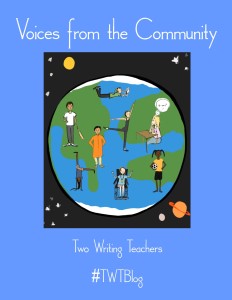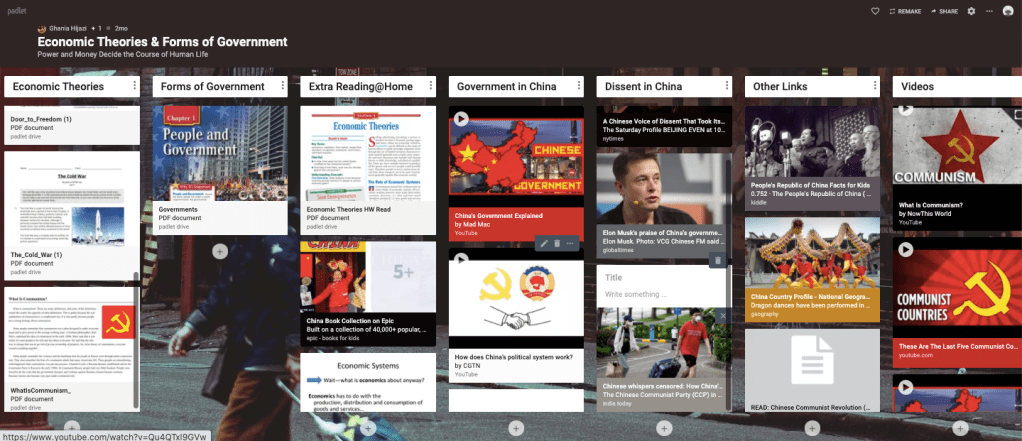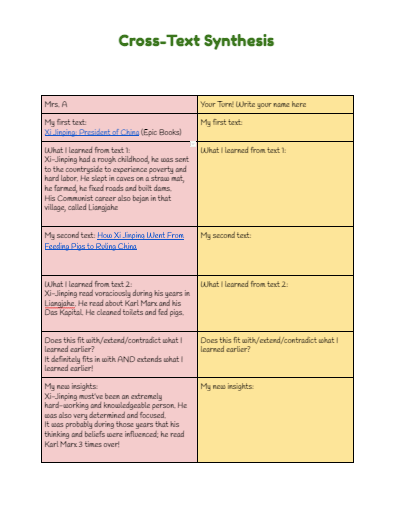The first time I tried to modify the mentor content for a writing unit of study was when I taught fourth grade. Our district was still new to the workshop approach, and what we (in fourth grade) tried and came out sort of successful with, was received very well by the other schools in the district.
We were doing a unit on the American Revolution and, being an international school based in the Middle East, we felt the content would not be very relevant to our students; our fourth graders wouldn’t relate to it with the passion and zeal with which we’d want them to identify with their learning topics. After some brainstorming and the full-throttle support from our admin, we came up with a plan. We were very new to the workshop approach itself, so our plan was shaky, but we were confident we would not let the learning opportunities get wasted. We were confident because we kept one goal in mind: To make the learning meaningful and relevant. And so, we tweaked. In the initial bend, students and teachers studied the American Revolution with teachers reading one mentor text to build some background knowledge and students reading from a variety of books from their classroom library. During the second bend, we kept the teaching points the same, but we asked students to choose revolutions from their home countries this time around. Even though they were excited to learn about the American Revolution, thanks to the wonderful read-alouds and mentor texts that go with the unit, thinking about similar struggles closer to home immediately upped the engagement quotient. It was like research clubs, except that, instead of researching narrower aspects of the American Revolution (which was what the unit instructed us to teach), students had a choice of which revolution to pick. So we had different groups researching the Arab Spring in Egypt, the then-ongoing Syrian Conflict, the Indian freedom struggle, the South African apartheid movement, and some other revolutions around the world. There was lots of learning happening, and when the kids got to share their experiences, they taught others new things too. All the while, students learned to be better readers and stronger researchers — to ‘read like a historian.’ Also, since I had kept my demonstration text and topic the same (the American Revolution), they learned a lot about that, too. In fact, this turned out better than sticking to one topic as given in the Unit of Study!
Over the years, we have fine-tuned our humanities instruction. I now teach middle school, and our social studies instruction is imparted through the reading and writing workshop model only. We now understand that the focus remains on the reading and writing skills, and teach those skills using content from our social studies curriculum. We now know students’ learning of social studies has to be totally different from the way we, their teachers, learned it. We learned concepts from our teachers, from textbooks, and from books borrowed from libraries, or encyclopedias. Today, with the information on the internet increasing exponentially, they have it all laid out before them at the click of a mouse. Even at a voice command. That is why we don’t really need to ‘teach’ them history and geography in depth. We need to teach them the best research skills, the strongest reading skills; we have to teach them how to sieve the information they receive, how to discern reliability and authenticity of the sources they come across, how to ‘read like a historian,’
In seventh grade, our social studies topic was “Economic Theories and Forms of Government,” and our read-aloud was Red Scarf Girl. Because we were reading Red Scarf Girl, we took the opportunity to lead the students into an inquiry into the Chinese Cultural Revolution and then into how the government of China functions. One important aspect to keep in mind is student choice when following the workshop approach, so while we taught about China, students picked different countries to research.
The first step was to start the read aloud. When there was mention of Chairman Mao or the Cultural Revolution, I’d lead them ‘out of the text’ and into some extra reading. For starters, “An Introduction to Communism” from Commonlit was helpful in creating background knowledge. As I read part of this article aloud to students, I demonstrated the first couple of nonfiction reading strategies the unit teaches (i.e., pausing at parts that seem confusing or fascinating and generating questions, determining the central idea). Students were sent off to read or watch a couple of other resources related to the countries they had picked and to practice the strategy. I went through the unit in a similar fashion – thinking aloud with my resources about China, creating text sets like this Padlet, and assigning students similar work to do with the countries they chose to research.
Also, I created background knowledge by teaching them about the different forms of government (from resources curated on the Padlet, and modeled one reading strategy each day (for summarizing, for cross-text synthesis, etc.) as I explored the different forms, and then researched how the government of China functions.
The research formed the basis for the students’ writing unit, where they wrote information books on the countries they picked. Click here or here to view student samples. For our celebration, students taught their topics to their peers, after which they knew enough to be able to write an argument essay, picking what they thought was the best form of government, and supporting their claims with claims and evidence learned over the course of their research and celebration.
While we definitely do teach social studies concepts, the focus has shifted from content to the skills needed to effectively grapple with the content. It is definitely not easy work. It involves hours of scouring for the right material and curating and checking off which resources might be used at which point in the unit. But a couple of years into doing this work, we are bound to become more adept. It is time well-spent, because, like I said, it makes the learning meaningful, purposeful, and relevant. Also, it ties together everything students learn effectively, as they see the connection between reading nonfiction and writing arguments, and writing informational research reports. They see how one thing leads into another in real life.
I wouldn’t teach social studies any other way now!
Shaista Ashraf teaches humanities to middle school students. She is passionate about instilling a solid love for reading and learning in her students. Her aim is to create lifelong learners, citizens who are as committed to learning as she is – learning just for the sake of knowing, for the sake of learning, rather than for academic reading and writing. Trained in delivering instruction through the workshop approach, she cannot imagine herself teaching any other way now. A mother of three kids in different decades of their lives, she is a strong advocate of self-care and work-life balance. She loves writing along with her students, modeling her own reading for them, and spends her free time in class curating, listing, and talking to students about the books in her classroom library, and her time at home cooking, reading, watching TV shows, and gardening. You can follow Shaista on Twitter @ShaistaZaidi.






Your section about “We need to teach them the best research skills, the strongest reading skills” really lays out the “why” for integrating social studies with reading workshop. Thanks for this wonderful post outlining how you did this!
LikeLiked by 1 person